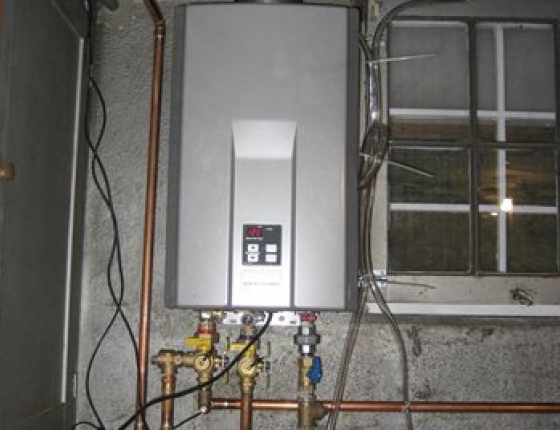About the project
Water heating is the second largest energy use in residential homes in the USA. It is also a very inefficient use of energy, with typical equipment efficiencies around 60%. Federal efficiency ratings for hot water heaters provide a means to compare relative performance of different water heaters, but do not characterize actual energy use. Data from field tests is important to determine whether actual savings compare to estimates based on laboratory tests and efficiency ratings.
With funding from the MN Dept of Commerce, CEE ran a two-year field study to evaluate energy and hot water use, efficiency, and qualitative aspects of tankless water heaters. Staff installed storage and tankless heaters in Minnesota homes and alternated between them on a monthly basis. Homeowner surveys and laboratory tests supplemented the resulting data. The project found that replacing a typical natural draft storage water heater with a tankless model yielded a 37% savings of water heating energy per household. In addition to saving energy, they provided acceptable service at a reduced monthly cost without increasing total hot water consumption.
However, changes in venting configuration and gas piping increase the installation costs of tankless water heaters. Due to this, they can have paybacks ranging from 20 to 40 years. The study found that energy and money saved from replacement were not sufficient to offset expense. But when a tankless hot water heater is installed during new construction, plans can take necessary venting and gas lines into account, reducing payback time by 5 to 10 years. If the home requires a power vented water heater for safety reasons, any water heater will incur the venting cost. The payback for a tankless water heater is improved 10-15 years when compared to a power vented tank type water heater. Tankless water heaters currently comprise about 5% of the new water heater market, in part because of their space-saving appeal and other non-energy benefits. Lowering the installation cost could further increase this market share and save a significant amount of energy.
Published journal articles:
Application of a Linear Input/Output Model to Tankless Water Heaters
Actual Savings and Performance of Natural Gas Instantaneous Water Heaters
